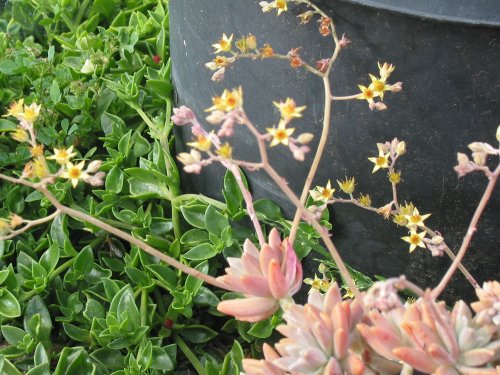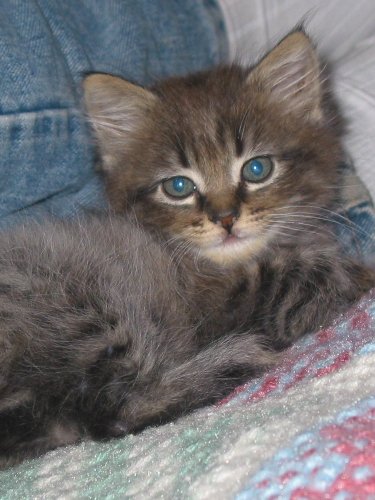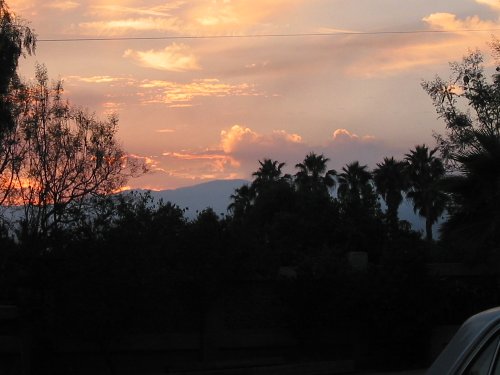May 25, 2009
No, you haven’t landed on the wrong blog. Though I usually only post about Tarot on my other blog, Spirit Blooms, in honor of World Tarot Day, I’d like to share my love of Tarot a bit more broadly, and also to honor some of the people of Tarot, including writers and artists that I think are rather special. So here it is, more than you ever thought you wanted to know about Tarot. At the same time I hope to dispel some misconceptions.
By the way, I understand that today is also World Towel Day for Arthur Dent fans (The Hitchhiker’s Guide to the Galaxy).
Tarot Writers and Artists
First, I want to introduce you to the blogs of two women and one man who’ve contributed a great deal to the study of Tarot, for me personally and for a lot of others. Mary K. Greer is the author of Tarot For Your Self and The Complete Book of Tarot Reversals, along with many other insightful books on Tarot. Rachel Pollack is an award-winning novelist as well as author of numerous books on Tarot and the Kabbalah, including Seventy-Eight Degrees of Wisdom, The Forest of Souls, and a pair of detailed companion books for the Haindl Tarot created by Hermann Haindl. Ms. Pollack also created the Shining Tribe Tarot.
In addition to those who write books about Tarot are a number of people who write articles, publish newsletters, review Tarot decks and books, and operate online forums. Then there are the deck creators who continue to color the lives of Tarot lovers with new and fascinating decks, beautiful images, and deep symbolism. James Wanless, Ph.D., or Captain Pick A Card (notice I’m linking to two different blogs here), is the creator of the Voyager Tarot, which is the first Tarot I owned and learned with, back in the late 80s. It’s a photo collage deck, and it still resonates for me in its beauty and usefulness.
Some of the most innovative modern Tarot decks include Mark McElroy’s Bright Idea Deck, and Emily Carding’s Transparent Tarot. While my preference is for a more traditional look and feel to Tarot, it’s decks like these that bring Tarot to people who never considered it before, and have helped carry it into the 21st century.
Sometimes an established artist decides to create a Tarot deck. Hermann Haindl is a great example of an artist who is also knowledgeable about Tarot, and I find his Haindl Tarot to be phenomenal. Artist decks are sometimes disappointments, either because the artists haven’t studied Tarot in depth, don’t have the right feeling for it, or because some aspect we expect of Tarot is missing. It’s not enough for a Tarot to just have pretty pictures or a novel theme. The best art-based decks are fabulous for reading, as is Elisabetta Trevisan’s deck, the Crystal Tarots.
History and Structure
Tarot is a centuries old phenomenon, the earliest European decks having appeared by the 15th century. No one really knows its origin, or its original purpose, but we know that it’s been used both as a deck of playing cards and as a system of divination for hundreds of years. It’s the precursor to our standard modern playing cards.
A Tarot deck is defined primarily by its structure. The deck typically contains 78 cards and includes two parts, a Major Arcana and a Minor Arcana. The Major Arcana contains 22 archetypal images, or Trumps, and the Minor Arcana is more like a deck of ordinary playing cards, with four suits of numbered and Court cards. Whereas a deck of playing cards includes only three face cards in each suit, a Tarot deck has four Courts, traditionally titled Page or Knave (the Jack in a playing card deck), Knight, Queen, and King. The Joker in modern playing cards is derived from the Fool archetype in the Tarot’s Major Arcana.
Three styles of Tarot decks have developed in modern times. Some use only pip cards, with non-scenic illustrations of the given number of suit elements for the numbered Minor Arcana. Others contain scenic illustrations in the Minors, which many people find richer in symbolism and easier to use in readings.
But enough of the technical details and history. I’m positive that if you’re interested in learning more, you’ll find plenty to intrigue you with a simple online search. For more about Tarot history, check out Trionfi.com or Tarotpedia. You can also learn about the history of specific decks at Wikipedia, such as the Rider-Waite-Smith Tarot and the much more ancient Tarot de Marseille.
The Art of Tarot
The draw for many people who love Tarot is the artwork. Some collectors don’t read with the cards at all. I won’t post any images here, for reasons of copyright. But I’ll provide a link or two to get you started at sites where samples of both ancient and modern decks can be viewed.
Golden Tarot by Kat Black (Use links at left to view the Majors, Coins, Cups, Swords, Wands.)
Tarot of Transformation by Jasmin Cori and Willow Arlenea is “an innovative deck by two psychotherapists offering an integrated and embodied spirituality.”
If you want to spend about two full days browsing samples of Tarot decks, you might want to try Aeclectic Tarot. This site also links to the Aeclectic Tarot Forum, one of the biggest and best places on the Internet to learn about and discuss Tarot, thanks to its most generous hostess, Solandia.
Last but not least, the German site Albideuter.de
compares the same cards from a staggering number of different Tarot decks.
Uses of Tarot
Tarot is most useful for gaining valuable insight into our lives, which is something that can’t be measured except through the experiences of those who use it or benefit from it. I don’t typically set out to use Tarot to predict the future, though there are times when it does that anyway, a mystery I won’t go into here in any depth, because frankly I can’t explain it. If someone is interested in how Tarot might do that, or how any kind of psychic ability or extra-sensory perception works, there are many theories, ranging from spiritual beliefs to quantum physics, and there are scientific studies going on all the time. Carl Jung experienced events that he classified as ESP, and as a scientist he thought the subject deserved further study. He also coined the term Synchronicity, or “meaningful coincidence,” which is what a lot of students of Tarot, including me, tend to think is at least partially behind how Tarot works.
If you’re interested in following some of the latest research into psychic and other related phenomena, you might want to check out these links:
Institute of Noetic Sciences
American Society for Psychical Research
Consciousness Research Laboratory
The Veritas Research Project, University of Arizona
I find that my personal use of Tarot helps me most with insight, helping me to understand what’s going on in my life — especially inside my own psyche. It sometimes helps me make decisions by pointing out options or perspectives that I hadn’t thought of on my own, and it helps me by pointing out where I have either deluded myself about something or I have a lot of unconscious stuff going on that I need to be more aware of. I’ve also at times used it as a tool for meditation. Some psychologists and therapists use Tarot in their practices to help clients understand their projections, archetypes at work in their lives, and other unconscious issues. Sometimes an image is much better than words at bringing unconscious material into the open or into greater clarity. Tarot could be compared to dreams in its symbolism, and to literature in how it provides a metaphor for typical situations and processes that all humans experience.
I’ve used Tarot to spark my creativity, either to inspire the topic of an essay or to help me work out plotting puzzles in my fiction. The solution to the mystery in Snow Angels came almost entirely from a series of Tarot readings. I’ve read of other Tarot users who also find Tarot helpful in their creative work.
Additionally, Tarot is used, mostly in Europe, to play a card game known as Tarock, Trionfi, or Tarocchi (more instructions here). I’ve never played this game, and the instructions look complex to me. (I grew up playing Canasta and Cribbage.) My understanding is that it’s something like Bridge.
I discovered my love of Tarot more than 20 years ago, and to this day it remains my favorite mystery.
Happy World Tarot Day!
— Barbara @ 1:48 pm PST, 05/25/09
April 19, 2009
Today is our local Avocado Festival. I don’t plan to go this year. My spouse went very early, before the crowds arrived, for some fresh produce and a carne asada burrito.
I would’ve titled this post with the name of the actual festival we had here in town today, except that I’m going to criticize it a little bit, and I don’t want to cast a shadow over that particular event for any locals who otherwise enjoy it. My criticism isn’t about just our Avocado Festival.
The positive side is, I’m eating a strawberry. That’s always a good thing. In fact, I’m rich today, with three little baskets of strawberries and a good week or two’s supply of avocados. Not only that, we got some of the avocados for free, from a local business near one of the avocado packing plants. Presumably they’re cast offs from the preparation for the festival, since they aren’t very pretty ones. But they’re still delicious, and dead ripe, so I already got to enjoy some for breakfast. My favorite way to eat avocado is mashed with salt and pepper and spread on toast. Since I live with my favorite bread baker, this is the ultimate easy (for me) and delicious breakfast.
My rant is not about the immense crowd that will be there later today, even though I’m not a crowd person. I can handle crowds, and even enjoy them, in small doses. My rant is not about the local vendors who show up each year. It’s not even about the non-local vendors who show up there. After all, everybody’s got to make a buck, right? Some of the vendors are wonderful.
You can get the best local tacos, tamales, and burritos at our Avocado Festival that you’ve ever eaten, and there’s always a nice supply of fresh avocados, of course. Then there’s the standard fair fare, funnel cakes and lemonade and . . . well, the list goes on. We don’t buy most of that standard fair food, so I’m not even aware of what it all is. We usually go for the Mexican food. Some of it’s not available year round, even here, because it’s from groups or businesses that put out a special effort just for the festival. It’s a rare treat, and one of the great draws of the festival for us in the years we attend.
In the years that we attend, we’ve learned to walk there early, as soon as the booths are opening. That way we avoid the biggest crowds and the worst heat.
I’m not sure why, but the day of the Avocado Festival is always hot, even though we can get some pretty cool weather in April. Three days ago we had a high of something like 67 degrees Fahrenheit and the nighttime temp dipped into the low 40s. I wore long sleeves all day, and sometimes a sweater. Yesterday the high was over 80, and today promises to be at least that. (Update, it got up to 93 in town today!) But as usual, of those two weather patterns, the festival happens to fall on the warmer day. Or should I say the warmer day happens to fall on the festival day — the festival was planned well in advance.
Because of the heat and the larger size of the crowd later in the day, and some combination of those factors that seems to make everyone tired and cranky by afternoon, the feeling of the late day crowd changes in a way that becomes distinctly unpleasant for me. So if I don’t go early, I’m not likely to go at all. In fact, I’d just as soon the booths opened at six in the morning rather than nine.
What bothers me about the festival is now fairly universal, I suspect, to local festivals and fairs all over the country. There are very few locals selling handcrafts and artwork anymore. Many of the vendors that sell non-food and non-produce items — and some of the food vendors as well — have traveled from other places. Some of them make the rounds of, possibly, every local festival and county fair in the state, and maybe more than one state. Some are from industry, manufacturers’ representatives selling things like secure mailboxes and automatic sprinkler systems, the sorts of things you expect at home shows and trade fairs, not unique to an Avocado Festival. Some are selling manufactured clothing and home decoration items that I can buy at a department store or a swap meet. The traveling vendors have always been around, but lately they seem to be the only ones. Where are the locals? To me this trend of increasing numbers of non-local vendors is like finding the same chain restaurants everywhere you travel. That used to disappoint me when traveling on business. If there’s any perk to having to take business trips, it’s discovering local eateries that are unique to the city you’re visiting. But if you travel to another place only to eat at Outback or Chilis, you might as well have stayed home. Why go to the local festival to buy the same items that will be sold at the county fair two months from now? More importantly, why go to find items you can buy at the department or hardware store? The point of a local festival, I thought, was to find things that can be found in only one place, to celebrate that location’s unique qualities and products.
I’m glad that we still have some local businesses that sell food and a few other items there. In the years I attend, if I go early, I can pick and choose which places to visit, and I usually enjoy myself. But I miss the kinds of things we used to see more of and that I always loved festivals and fairs for: handcrafts, local artists’ work, and those really unique and unusual items that once were only found at local fairs. They seem be rare these days, almost extinct.
I’m sure there’s a reason for this. Perhaps it has to do with the process of arranging to sell at one of these events, that it’s become so business-oriented that it shuts out local artists and craftspeople. Perhaps people don’t have time anymore to make things themselves and arrange to sell them locally unless that’s their full time business. If it is their full time business, they likely have to travel from fair to fair to make it pay off year-round.
We see some of those traveling vendors selling beautiful things, like handmade herbal soaps, stunning hand-carved gourd art, and some unique pottery. It’s great stuff, and I’m glad it’s there. But, whatever the reason it’s not there, I still find the lack of local handcrafts and artwork at these events sad. I know some of the vendors hate it when I ask, “Are you from around here?” But I continue to ask. It doesn’t mean that I won’t buy what they’re selling, if I love it and can afford it. But I can’t help being more enthusiastic about finding local goods that I love at our local festival.
The only other rant I have is, where are the hats? This is the time of year our warm weather sets in. In the past I’ve arrived at the festival only to wish I’d brought a hat. I can’t be the only one. There used to be hats for sale all over the place there. I usually bought my hat there to use for yard work or walking around in the sun for any reason, because it was the right time of year and they had a nice selection for good prices. Last year I hardly saw any hats. Maybe they were there and so few that I never came across them. I hope at least the hats were back this year.
Last year, too few local handcrafts, too few hats. This year I’m not going to the festival. Can anyone connect the dots?
Maybe the real problem is that I’m not like other people who attend. Maybe most people prefer mass-manufactured, universally available things. Who knew that would become the major draw of a local festival? Maybe it’s just me.
In any case, I’m happy for the strawberries and avocados. It’s a good day.
— Barbara @ 11:09 am PST, 04/19/09
November 27, 2008
Yet another weather blog. That seems to be all I have to write about recently, for which I apologize.
There’s an old saying about rain in California, that it doesn’t rain but it pours. Last night and this morning are a perfect example of that, here in my vicinity, and a day or two earlier with the evacuations of burned areas north of here for fear of mudslides.
After Election Day — the results of which pleased me extremely on the presidential front — we settled into another hot, dry spell with high temperatures in the 90s for too many days to count. I’m trying to put them out of my mind now, but I think this was the first year I ever used the air conditioner here as late as the third week of November. October is supposed to begin our rainy season.
Now the rain. No, now the RAIN. Last night it was so loud it woke me three different times, and once scared the cat so she wailed something about whether the sky might be falling and needed to be reassured. I gave her a hug. (I needed a little reassurance myself.) It wasn’t windy. The noise was just rain. Lots of it.
This morning it’s still raining, but it’s a less frenzied kind of rain. There seems to be less rush to dump all the moisture in the sky on us at once. My estimate is that we might have gotten two inches last night. But I don’t have a rain gauge, so I’ll have to verify that. It sounded like two inches!
And yes, I meant what I said in that last post. Now Tara is nearly 8 months old (Saturday the 29th), and this is her second rain. It’s her first really big rain, since that Election Day rain turned out to be merely a wimpy drizzle after all. And now our fire season is officially over — until the next long dry spell, which hopefully won’t begin until July. The reservoirs are low, so we could use quite a lot of rain this year in Southern California, as well as a nice thick snow pack in the Sierras. Besides, our amazing, intrepid firefighters need a vacation.
In spite of this being a much bigger rain than I hoped for, I’m grateful. The sun is peeking out between clouds now, and I’m wishing everyone a Happy Thanksgiving.
Wherever you are and whoever you’re with, have a wonderful day!
— Barbara @ 11:06 am PST, 11/27/08
October 16, 2008
It’s dry here, desert dry, with humidity in the teens. When it’s hot and dry like this, black widow spiders come out to catch droplets of water from the hose, as the sprinkles shift strands of their webs in the rock wall in the lower back yard.
The other night, a few miles away, people were evacuated because of a brush fire threatening homes, an untimely reminder of last October and our four-day evacuation. I slept lightly, when I slept at all that night, worried we’d get a reverse 911 call, should the Santa Ana winds shift. Now that fire is well contained, and the sky is blue. Yesterday some high, wispy clouds stretched thin feathers across it, so high up we didn’t feel any moisture from them. At least they were pretty to look at.
The cat keeps getting charged up with static electricity when she plays. Then she touches me, gets a shock, and thinks I’m being unreasonable. But she’s a forgiving soul. As soon as the air conditioner chills her, she decides some lap time might be in order. Tara’s coat, which has fluffed out again after a few months in which we thought she’d grow up to be a shorter haired cat, now suffers from static cling, crackling close to her body as I stroke it. Her glorious, bushy tail picks up everything. It’s better than a feather duster.
Last night she cozied up to Barack Obama during the debate. I had the little desktop TV on, and she sat right in front of him, blocking my view, gently patting his face now and then. She completely ignored John McCain. I think Tara has cast her vote.
I’m still inner focused and in reading mode, sometimes online, sometimes in books. As soon as I post this, I’m off to read some more. Someone let me know when autumn starts for real around here. In my experience that’s around Halloween, so maybe my “autumn’s here” notice will be a knock on the door by little goblins.
I would be envious of people like Marion who are expecting snow soon, if I didn’t realize how many months of it she’s in for, away up there in Canada. Extreme weather for months and months — or just weather that’s too extreme, period — isn’t fun, at either end of the spectrum. I wish us all longer, gentler autumns and longer, gentler springs.
Kitten pictures follow. (Click on thumbnails to view larger images.)
The first two are from 3 months ago, when Tara was 3-1/2 months old and Indi was still with us — um, training her? Apparently they didn’t find anything good in the trash that time. In the second one, that was my clothing Miss Bigfoot was digging her claws into with the look on her face that said, “Gotcha!” She’s usually gentle with her claws when playing now, though she has yet to completely understand about not biting. Maybe when she’s finished teething in another month and a half. She’s gradually getting gentler altogether when we play, because she knows if she gets too rough, playtime ends, and she would prefer that it never, ever end.


The next two are from yesterday, at 6-1/2 months. I caught Tara in a quiet moment lounging on an office chair that she’s not really supposed to be on, but I’m just happy if she doesn’t claw it. The first shows a glimpse of her fluffy tail.


She’s starting to settle down, except for her desire to climb every mountain, which involves knocking things off high shelves. I have most of my breakables put away safely now, so if she doesn’t kill herself dragging a heavy, blunt object onto her own head, we’re all safe.
— Barbara @ 3:22 pm PST, 10/16/08
October 6, 2008
We’re still in summer here, though we had a couple of days of delicious fall weather, and even a few drops of rain. But tomorrow is expected to hit the mid 90s again, and I’m tired of summer. Anyone need some warm air? Can I ship it to you by overnight express?
Oh well. Provided we don’t have wildfires like last October, I’ll be happy and relieved to just need to wear shorts a little longer.
I’m not sure what’s going on with my not blogging more. I hope you keep checking back in case I have a burst of inspiration. There just hasn’t been anything to post that seemed as if it would interest anyone else. Heck, some of it didn’t interest me.
I have been reading a lot that interests me, mostly nonfiction, and most of it of little general interest. I’m a bit eccentric in my tastes, I think. A few weeks ago I enjoyed an excellent book of slightly more general interest titled, Inner Work: Using Dreams and Active Imagination for Personal Growth by Jungian analyst Robert A. Johnson, on dream work and active imagination.
I’m sure I’ll get gabby again one of these days… Until then, take care.
Gone fishing reading.
— Barbara @ 4:15 pm PST, 10/06/08
September 13, 2008
Yesterday I killed the largest black widow spider I’ve ever seen. She was beautiful, but … she had to go.
Sorry to write such a Halloweenish blog so early. But the weather has been cool and cloudy here the past three days, making it possible for me to do a little gardening again, which makes me happy. I’m afraid in the hottest weeks of summer I don’t venture out much (or blog much, apparently), except to throw a little water on things to keep them from dying. Unfortunately weeds don’t seem to need much water to keep them from dying.
I don’t think I’ll ever be one of those people with a perfectly manicured and landscaped yard. But maybe this suits my personality better — you know, finding huge creepy spiders, growing a forest of weeds as prolifically as anything else, trying to figure out what to do with monster sized zucchini after zucchini, wishing a certain gopher would move elsewhere and that the neighborhood outdoor cats would stop killing my lizards and pooping in my flower bed. Story of my life. But it makes for more drama, perhaps, than a perfect yard.
Tara is growing up fast. She got spayed last week, which set her play time back some, a setback which had to be forced on her because she can’t seem to sit still for more than five minutes. People are such wusses after surgery, compared to pets. It makes one wonder why we’re the dominant species on the planet.
Now Tara’s making up for lost time!
My thoughts and prayers go out to those in Texas, where Hurricane Ike seems to be acting up much worse than my little terror of a kitten could dream of doing. I hope Ike doesn’t give her any fresh ideas.
— Barbara @ 10:38 am PST, 09/13/08
July 14, 2008
I had great plans for today, because I got so much done yesterday morning, outdoors. I finally got more seedlings in the ground — not the easiest task for someone with arthritis and fibromyalgia, who’s out of shape, and who’s working in hard, rocky soil. But I paced myself, got a lot done, and I felt good about it afterward.
I was so happy with the result yesterday that I planned to do more of the same today. Then I wakened later than usual, and not in the best mood. I dealt with kitty behavior issues right away, then I went to the store instead of starting work in the yard. Finally I came home to a hot late morning promising an even hotter day. So I canceled my plans to do more spading and planting, and here I sit indoors with the air conditioner on, wondering why that seems to happen so often. Not the hot weather. That’s to be expected this time of year. But I’ve noticed with many other things I do that when I make specific or detailed plans, they often fall through. Not just gardening tasks.
I realize now that even though I fooled myself for years, dutifully planning my work, both on the job and off, I’m really, at heart, not a planner at all. I’ve told my husband time after time how I like to plan things. But truth to tell, I’ve never actually been much for committing to anything. What I was really saying was probably that I didn’t like anyone else to make plans for me that might keep me from finding my happy accidental tasks. I think it’s because plans seem so often to change — and often for the best — that I’ve discovered this. Plans change. So why bother planning? Of course in the workplace that wouldn’t have flown. In any cooperative effort, plans make sense, because we depend so much on others getting their work done on time.
On my own, who needs plans? Maybe it’s something to do with being a generalist, not a specialist. But in a way I’m like this little cat, self-directed and easily distracted — by the right distractions. Those distractions often become momentary passions, obsessions that frequently happen to turn out really well.
Yes, I could tell myself, “Just get out there and do the damned gardening, like you planned.” But then the joy wouldn’t be in the effort, and instead of feeling good about what I accomplish, I’d be dehydrated, overheated, and feel terrible the rest of the day, possibly tomorrow as well. I know better. So I threw some water on the little transplants, and came inside. Maybe tomorrow morning. . . .
Still I wonder. Why do I get the most done when I don’t plan to? When it’s a spur of the moment, “I think I’ll do this right now” kind of thing? That’s what yesterday’s effort was. I woke up, got dressed, and started right in, because that was exactly what I wanted to do that morning, as soon as I woke up. I woke up inspired. This morning I didn’t. At least not with that inspiration, not with the one I expected.
I notice this is especially true with creative work of all kinds, and with learning, where it’s not the weather that changes things, but something unknown. Just when I wouldn’t think I’d even be in the mood for it, I get a whim and do that different thing, whatever it may be, and that’s when I get the most out of it. I seem to be most productive when I haven’t planned anything at all, when I pay heed to momentary flashes of inspiration or that sudden opportunity. Happy accidents and spontaneous productivity. Do you have them? My life seems full of them. They’re what makes me happy.
Here’s the real mystery: I don’t think it’s just about my mood or how I’m feeling, or the weather. It sometimes seems almost more like a synchronous universal dance of some kind. Sometimes all the pieces are in place, inside me and outside of me.
And it’s not just me. I think there are lots of people, like me, who’ve struggled all our lives to conform to a world that likes plans, schedules, rules. So much so that I grew up, and spent thirty years of adult life, thinking I was more comfortable with plans, schedules, and rules. Actually, as a kid, I never felt right about it. As an adult, I bought into it. Had to, to keep a job. But if that’s the way we should live life, how does one explain all those happy accidents by inventors, scientists, and discoverers through the ages? Granted, a certain amount of preparation took place before those historical happy accidents occurred. But many important discoveries in history weren’t planned. Not the way they turned out. Someone happened by chance to be in the right place at the right time, doing the right thing, or paying attention to what turned out to matter most.
Were they in tune with the synchronous dance of the universe?
For some people, I know this doesn’t work. Planning works for them. That’s great, more power to them. We need planners in the world, and maybe that’s their part of the synchronous dance. Someone has to read the music and keep the time. For me, not planning works. It’s about time I realized it.
Instead of gardening today, what will it be? I won’t know until seconds before I start, or perhaps after I’ve already begun.
— Barbara @ 12:10 pm PST, 07/14/08
May 30, 2008
Mystery author Eric Mayer* mentioned in a recent blog post that his blog journaling hasn’t been very habitual of late. He went on to write about habits, and that got me to thinking about my habits, and how they’ve changed in the past year or so. Obviously, for me, blogging has taken a back seat to other things. So has my fiction writing, other than attempting to sell my latest finished manuscript, a mystery about a tarot reader whose awakening ability as a medium gets her involved in a murder investigation. (Interested agents or publishers are welcome to inquire here.)
Habits can be good or bad, and I’m sure everyone has some bad ones they’d like to unload. But one new habit I’m happy to have taken on this year is gardening.

Gardening is indeed a habit, one that gets into your blood in a way I didn’t anticipate when I started out this year. I’d done a tiny bit of gardening as a kid, when I remember planting one rose bush of my own but mostly helping my grandmother with her strawberries and vegetables on the embankment behind my parents’ house. Later, in my first apartment, I nurtured a few houseplants, and throughout my work life I’ve usually kept a potted plant on my desk. I kept African Violets in a north facing window in the last house we rented, until a cat took over that window sill. Still, my husband did most of the outdoor gardening, with a little weeding here and there on my part, until March of this year.
It started this spring with tending a few vegetable and flower seeds until they sprouted, and then the seedlings until they went into the ground. From there I progressed to caring for plants in the ground and preparing the soil for more of them. It’s rapidly expanding to a succession of all of these things, in the hopes of keeping some fresh produce in our salad and veggie bowls through this summer, as well as brightening a corner of the front yard, where my ultimate goal is to keep flowers blooming in a little cottage style bed year round. I’m a ways from that goal yet.
I’m still new at this, and I got a late start this year, but I get help and advice from various sources, and gardening is now a firm habit that I won’t easily give up. It’s one of the first things I think about in the morning and one of the last I think about before the sun goes down.
The plants seem happy about my gardening habit, when they can figure out what season it is. Our weather this spring switched back and forth for a couple of months from one extreme to the other, first dry Santa Anas with temperatures in the 90s, and then thick cloud cover and a shifting Jet Stream chilled the air to the 50s. This went back and forth for weeks, with little pleasant weather in between, and it kept our plants confused. In the past two weeks the weather has leveled off, and the plants are loving it.
They say beauty is in the eyes of the beholder, and I’ve recently realized there’s little more beautiful to me than a tiny plant bursting out of its seed container. Call me crazy, but I think baby plants can be almost as cute as a kitten, and they, like the kitten, draw out my mothering tendencies.

(I’ll bet you expected a photo of a seedling, but I couldn’t help the obligatory kitten shot.)
To some this pleasure might seem like taking joy in watching paint dry, but to me it’s more like watching a sunset at the end of a heat wave.

We celebrated our first avocado blooms a few months ago.

Now some fruit has set, which we hope will grow to maturity.

Avocados, according to my resident expert Ken who’s read something like 200 online agricultural reports about them, tend to drop a good portion of their fruit early, which can be disappointing to home gardeners. It will be disappointing to me, if it happens, because Reeds are my absolute favorite avocado variety.
Two days ago I celebrated my first squash blossom.

Zucchini may seem an ordinary thing to seasoned gardeners. It’s one of the easiest things to grow and the butt of gardening jokes, usually in reference to an overabundance of it. But I like zucchini, I love my resplendent squash plants with their huge green leaves, and those yellow-orange blossoms are gold to me.

I’m learning more about the various weeds that grow in the garden, some of which are edible. For instance, purslane and dandelion make delicious salad greens. Note, if you decide to try eating weeds from your garden, be careful that you know what you’re eating. Ensure that the plants haven’t been subjected to herbicides or pesticides and that they aren’t in fact toxic weeds.

Even some semi-edible weeds, like the sour grass we all discovered as kids, can be a problem if eaten in quantity, I’m told, and purslane looks very similar to a toxic type of spurge that often grows right alongside it. Have an expert show you how to identify edible weeds, and examine carefully whatever you pick to eat. This point was driven home to me when I found spurge, with its milky sap, growing in my own little purslane patch.
Yesterday Ken pointed me to a Los Angeles Times article about Guerrilla Gardeners, which linked to a slide show on how to make “seed bombs” as well as two blogs, here and here, about guerrilla gardening.
Gardening has not only revolutionized my daily routine. It’s apparently a revolution that’s spreading once again, as Victory Gardens did in the last century, with people today gardening to save money on local food and working on a clandestine volunteer basis to re-green the land.
_ _ _
* In case you aren’t aware, Eric Mayer and Mary Reed’s latest John the Eunuch Byzantine mystery, Seven For A Secret, was released in April by Poisoned Pen Press. If you haven’t kept up with their historical mystery series, it’s not too late to start. The earlier books in the series are still in print, and some are now available as Kindle editions.
— Barbara @ 3:27 pm PST, 05/30/08
March 15, 2008
Have you ever had trouble deciding which topic to read about next, or what to major in in college? Has anyone ever told you that you have too many hobbies? Have you ever thought about leaving a perfectly good job to look for something else that might interest you more — even if it doesn’t pay more? Maybe you’re a generalist.
This past Saturday, Dave Pollard at How To Save the World linked to an essay in his Links of the Week that he described as brilliant and liberating, and I agree.
The essay, by William Tozier of the Notional Slurry blog, is titled, There are exactly two ways: one, and many. The two ways he discusses are specialization and generalization.
William Tozier proposes the notion that we’re all evolved to be generalists, that specialization isn’t normal. I tend to agree when I consider that many of our forbears were more general in their skills and knowledge than we are. Even today, skills tend to be more generalized in humans living closer to nature, and survival in a wilderness requires a lot of flexibility.
When I think about it, the only things our earliest ancestors planned was to survive, and they were never sure how they would have to do that. The only things they finished were a good meal when food was available, or a new tool or garment when an old one wore out — often taking time to add improvements or embellishments, so even they were never finished. They paused to take in their world and observe it. They learned from everything around them. They were creative, they were nomads, and they were students of life. They paid attention to what came their way, they took them as signs of what they needed to do, for now.
William Tozier discusses the problem of explaining to specialists what we generalists do, how to label ourselves in today’s world. It can be a problem, and I think this must be why, long ago, I started to think of myself as a writer. Aside from having an aptitude for English and composition, a writer has to read and learn about many things in order to do what she does. Writing provides an excuse to research anything and everything, as possibly relevant to a project. Later still I began referring to myself as a creative person, because that can involve lots of different interests too, even more than writing. It can encompass activities that are finished when they’re finished, or never finished, rather than finished to deadlines. Of course writers have deadlines, if they hope to make money at it, and there the generalist has to adapt to the specialized modern world.
I conformed to the specialized world for years, in being a reliable employee and meeting deadlines. I glued myself to my chair and focused on my job. I met deadlines, and earned awards and promotions for my conformity and work ethic. But I wasn’t happy. I didn’t even feel healthy doing that. Eventually it became habit, and I got so I felt uneasy if I didn’t have a plan. So then I was really stuck — uneasy with my schedule and commitments, and uneasy when I didn’t have any.
After a lifetime of thinking I wasn’t doing life right, that I needed to be more energetic, and get more done, finish more things, I feel relief and satisfaction to realize that I’m a generalist and always have been — and there’s nothing wrong with that. It explains so much. Some people may think of being a generalist as a bad thing and call us dilettantes, or unwilling to commit, and some may even think it’s a sign of a problem, one of those recently defined mental disorders for which there always conveniently seems to be a new drug. (When did we start inventing diseases to match the drugs instead of the other way around?) Heaven forbid any of us should be anything but cookie cutter normal, whatever that means. In our culture it apparently means we have to specialize in something, we have to plan everything out, have goals and deadlines, in order to succeed. We have to finish long lists of things, and fill every minute with structured activity.
Today we don’t just have a work ethic, we have a work ethic on steroids.
I for one am ready to stop the madness. If we were intended to plan everything out, then why do we need artificial planners like Daytimers, Palm Pilots, and Blackberries? If we’re supposed to have jam-packed calendars and meetings overlapping meetings, then why didn’t we evolve to keep our schedules in our heads, and to be in two places at once? If we were supposed to travel the same road everyday, then why do we love vacations so much?
Unfortunately, being generalists brings some of us less material success in life, since it’s much less likely that we decide on distinct, well-defined career paths, and even if we do, we get this itch to change careers now and then. We’re looked down on when we tend not to finish things to a schedule — and I agree that makes sense when others are depending on us to finish so they can do their things. We’re often better off working on our own, to our own schedules, which are pretty much nonexistent, and without anyone else depending on us conforming to a schedule. Sometimes we’re called Jacks of all Trades.
Provided you figure out eventually that this is how you’re supposed to be, that there’s nothing wrong with you for wanting less structure and commitment in your life, being a generalist can bring a great deal of freedom and happiness. After all, what makes you happier than being yourself, no matter how many directions that may lead you?
I’m a generalist, and have been all my life. I’m grateful to finally figure this out. Thanks, William and Dave.
— Barbara @ 12:22 pm PST, 03/15/08
January 1, 2008
Happy New Year!
Today entered with a beautiful sunrise and left with a gorgeous sunset. What more could we want for the first of the year?
I’ve come to think that the day I enter a new year should be almost like any other day, that making resolutions for the entire year ahead isn’t really sensible. Anything can happen in the course of 12 months, and sometimes our focus changes completely due to forces outside our control. So instead of thinking about resolutions, I spent a lot of time in the past few days reviewing not only this past year, but my entire adult life. The whole-life review has partly to do with a journal project, basically sorting through a mass of accumulated pages from years of personal journal keeping and coming up with a way to edit them down to their essence and organize them, to preserve the memories without all the bulk. In the process I’ve read back through pages that I wrote at 18, 19, and 20 years of age. Wow, what a kid I was — and still am, in some ways. But it made me think a lot about choices and where they lead us, and how we define happiness and success at different times in our lives, especially how our focus shifts, sometimes suddenly, and what we spend our thoughts on. It made me face some of my regrets that I hadn’t considered or thought about in years.
Those regrets include hurting people’s feelings in any way — and I’ve committed some doozies, usually by accident but in hurtful, unthinking ways just the same. I regret changing my college major from English, leaving college without a degree, spending too much time in college distracted by and pining over young men, imagining potential relationships where it should’ve been obvious to me they didn’t exist, joining a church at 19, which distracted me even more from school and may have been what finally drew me away from it altogether — there were boys there (gag me with another repetitive, pining journal page) — and taking religion too seriously for even those few years, mistaking it for a deeper form of spirituality that it was not. Let me say right here, young women put far too much emphasis, or at least we did back then, on finding mates. It’s absurd. Though I eventually did, and have been with him for going on 25 years now, he wasn’t one of those responsible for distracting me in school, so you see all that pining back then was a complete waste. Later in life, I regret not buying a house sooner (though I’m not sure how that would’ve been possible earlier), not taking more vacations when I could afford them, buying even half of the magazines I ever purchased, spending rather than saving most of the excess I finally earned for a few years (and still not spending it on vacations), not buying a new car before I retired, and not giving up on being a novelist sooner. I’m serious about that — seven novels with no sale is too much — enough already!
In spite of those regrets, I’m pretty happy with most of my choices, especially in my spouse, and even in some of the jobs I didn’t like at the time but which were worth the opportunities and the friends they brought me. In fact all my experiences, including many I regret, taught me something of value.
Regrets are a waste too, so I won’t dwell on them, or on dreams or plans for the future. Instead I want to focus on now, on how I’m doing and what I plan in just the next few days or weeks. If there’s anything else I need to focus on more of the time, at this point in my life, it’s the same things I think we should always focus on, all our lives. Most of the people I know spend too much worry on whether we’re good enough, or what we’d change about the past. And some of us spend too much time worrying what others should do, or what should happen that’s out of our control, to make us happy. So I’m reminding myself yet again:
Be happy with myself, as I am
Don’t worry whether others like or approve of me
Treat myself and others kindly and with respect
Don’t let anyone tell me how I should live my life, and don’t tell anyone how to live theirs, as long as they’re not harming anyone
Stand up for myself and for the rights of others
Love life, and live it with passion and an open mind to possible outcomes
Have no regrets — let them go
Follow my bliss and enjoy seeing others follow theirs
Own my life
Don’t worry at all, let tomorrow take care of itself
Learn from everything
All my best regards to you for 2008, and good luck in the coming year.
— Barbara @ 6:43 pm PST, 01/01/08
















